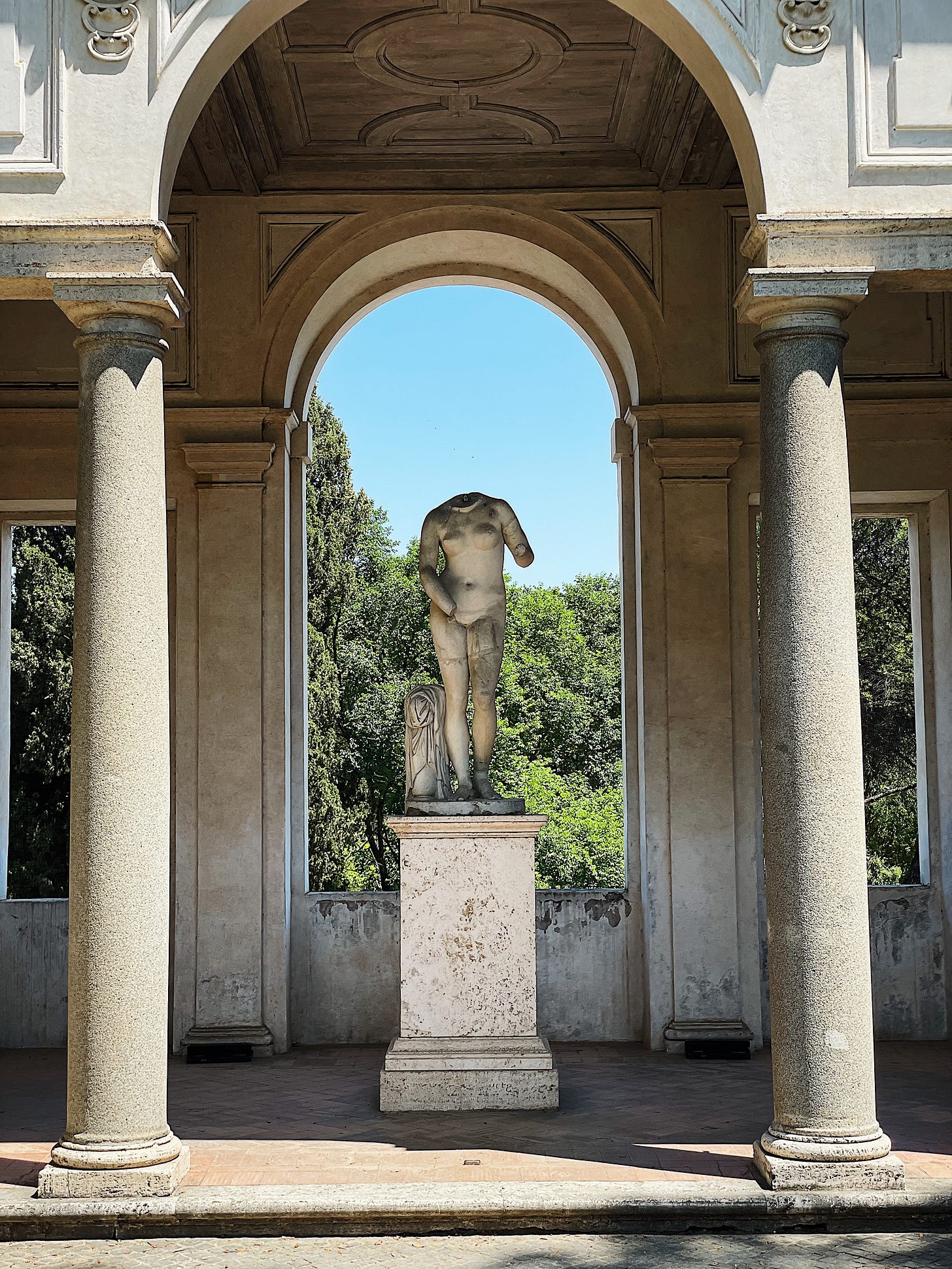Rome Villas (Part I) & Panzanella Romana
My favorite villas in Rome (and the countryside) and a bread salad from Rome's traditional cuisine!
From Papal Rome’s Simposio!
Rome is the city of villas; anyone I know has a park they can easily reach on foot or with a short drive.
The mild climate is the historical reason: since ancient Rome, the wealthier citizens built their palaces and annexed gardens where it was possible to cultivate any Mediterranean species and sometimes even exotic plants.
After the usual decline of the Middle Ages, during which these green areas were used as pasture, the Renaissance came to a rescue. Popes, cardinals, and noblemen competed in magnificence. Showing wealth and power was, still is, and always will be a way to gain more of both.
The gardens of their residences were considered canvases for works of art and were populated with fountains, sculptures, nymphaeum, and lodges. The rediscovery of the classics included the "arte topiaria", the botanical architecture that researched the perfect balance between men and nature by pruning trees and shrubs to obtain geometric shapes. In order and symmetry, men and nature merged and recreated the so-coveted harmony of the universe and found a way to elevation.
It is a misconception that the so-called "Giardini all'Italiana", the Italian gardens of the late Renaissance, were flower-free. Actually, the bushes were replenished with jasmines, lilies, crocus, and the rarest bulbs - competition also extended to them. What happened is that when the gardens were abandoned and rediscovered during the Nineteenth-century neo-Renaissance, they were, of course, found with the only greenery that survived, and the assumption was born.
The best example of these Renaissance gardens is in Villa Farnese, in Caprarola, a town in the countryside surrounding Rome.
Refer a friend and get one or more months free!
Keep reading with a 7-day free trial
Subscribe to Simposio: Italian Recipes & Stories to keep reading this post and get 7 days of free access to the full post archives.




